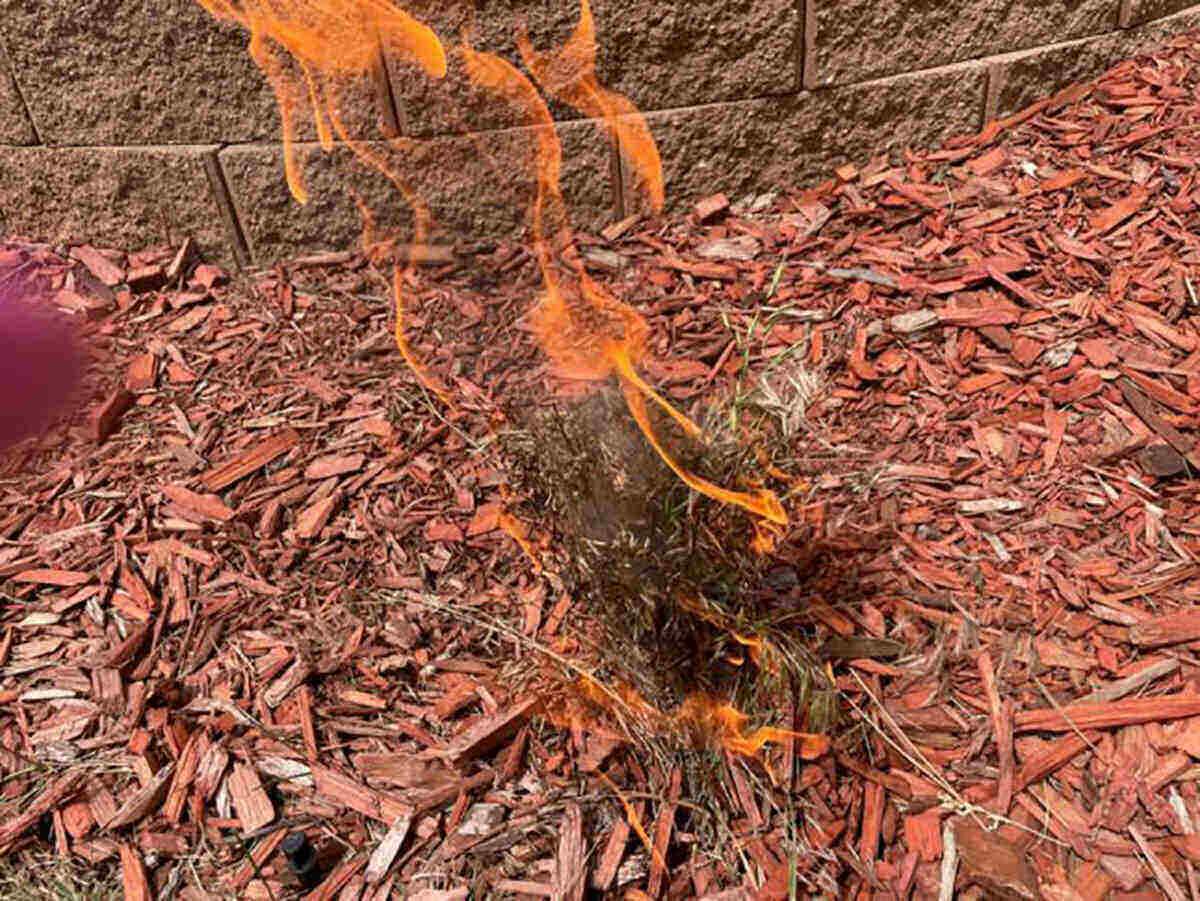
Most weeds are irritating, vexing, annoying, but cheatgrass is downright dangerous. Commonly called downy brome, this invasive grass is commonly underestimated and comes with many dangers.
Here we will cover the qualities of this winter annual and dig into what makes it so dangerous to our communities and the environment.
Why is Cheatgrass so Dangerous?
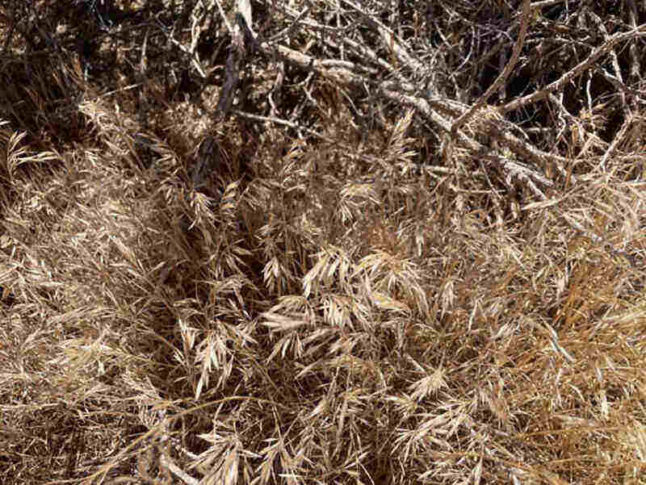
Invasive species of all kinds cause issues. Non-native animals and plants alike throw off the delicate balance of local ecosystems. Beyond that, cheatgrass is known as a noxious weed that contributes to wildfire risks.
Class C Noxious Weed
Noxious weeds are plants the Department of Agriculture has determined detrimental to property, livestock, crops, or public health. Noxious weeds cannot be sold, planted, or transported without permits.
The USDA classifies cheatgrass as a Class C, priority 3 weed. This means the primary goal is to contain the weed and reduce its population when possible. Additionally, many states specifically identify cheatgrass on their local lists, including Montana.
Fire Hazard
One of the reasons cheatgrass appears on noxious weed lists is because it ignites easily and burns quickly. Cheatgrass grows rapidly, filling in wildlands between native species such as big sagebrush. This creates an environment where slower burning plants will catch fire from the cheatgrass blaze.
When cheatgrass dies in early spring, it becomes fuel for fires. Because it dies earlier than most plants, cheatgrass lengthens the wildfire season. While fires are a natural part of many environments, the presence of non-native plants changes the natural cycle.
Fires fueled by cheatgrass damage surrounding plants and habitats, including keystone species like pinyon trees. The most concerning aspect of cheatgrass is how quickly it ignites. The heat from a car engine can be enough to start a blaze which will quickly spread to hotter burning plants like sagebrush.
Following a fire event, soil contains an unusually high level of nitrogen. Cheatgrass has adapted to this and will flourish while native plant species are slower to rebuild. It is a vicious fire cycle that threatens countless acres of native vegetation, particularly in the western U.S.
Cheatgrass and Your Home
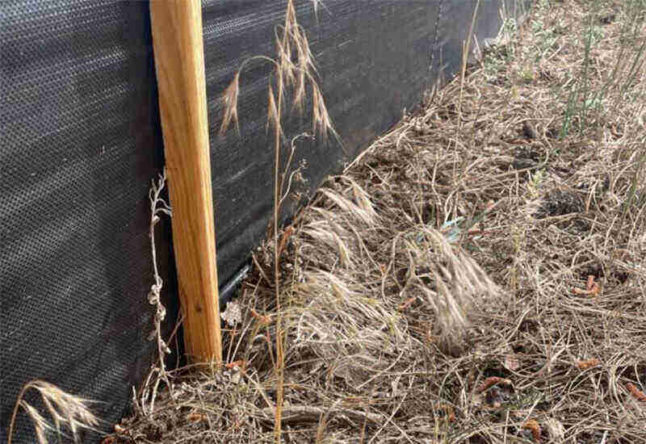
If you have cheatgrass growing within about 30 feet of your home, you want to remove it right away. The flammability of this weed increases the likelihood that your home will be damaged in a fire event.
Invasive
As we mentioned, all invasive species present issues for local ecology. Cheatgrass’s shallow root systems take water from nearby native plants, which impedes their growth. An abundance of shallow root systems can also lead to soil erosion.
The rapid growth and multiplication of cheatgrass can create monocultures in areas that were once filled with diverse vegetation. This causes habitat and food loss for local wildlife.
Harmful to pets
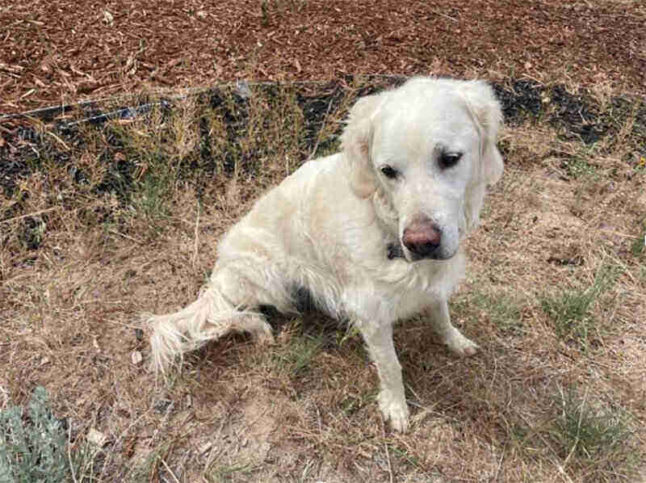
In addition to the threat of fires, cheatgrass can be harmful to dogs and other animals. Cheatgrass seeds are covered in tiny awns which easily cling to various surfaces. The tiny spikelets can get stuck on Fido’s paws, ears, and nose.
With time the seeds may migrate into the animal’s tissue, causing irritation. If this happens you will need to make an appointment with your veterinarian. Though less likely, seed pods can also find their way into a dog’s lungs and abdomen. This could lead to more serious problems including death.
Because of this, you want to check your dog for these tiny hitchhikers. Carefully comb through your dog’s fur when returning from outdoor adventures. Removing and containing seeds is also an important step in stopping the spread of cheatgrass.
How Can I Spot Cheatgrass from Ornamental Grasses?
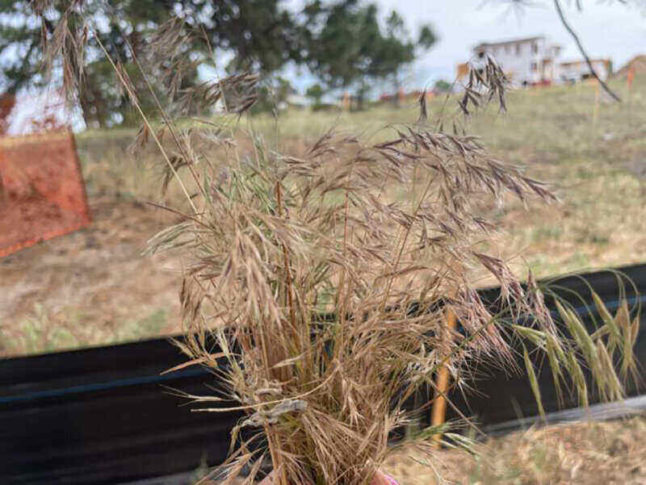
Cheatgrass is an annual invasive species found throughout much of North America. Best suited to semi-arid climates, cheatgrass is most common in Utah, Idaho, Nevada, Colorado, Oregon, and California. The hot, dry summers and wet winters of the Great Basin have allowed cheatgrass to thrive.
A bunchgrass, cheatgrass grows in bundles. Germinating quickly with the autumn precipitation, cheatgrass is bright green until it matures. As many as 10,000 cheatgrass plants can grow in an area just three feet square.
In early spring, cheatgrass grows quickly and produces seed pods. During this time the plants change from bright green to a brownish-red. Each plant can produce as many as 5,000 seeds before dying off in late April or early June.
Other common names for Bromus tectorum L (Poaceae) include downy brome, broncograss, downy chess, and soft chess.
Cheatgrass vs Foxtail
Cheatgrass shares qualities with many native plants and grasses. Foxtail, which is an eco-friendly grass alternative,, is commonly confused with cheatgrass. The primary difference between these annual grasses is size.
Cheatgrass remains small throughout the winter and then grows to about 1-2 feet in height. The seed heads are droopy and soft, giving it the downy moniker. Foxtail grows much larger, with some varieties reaching 5 feet, and stays green longer into the spring.
The best way to identify cheatgrass is by comparing it to images. You can also download a free smartphone app that allows you to take a photo, run it through a database, and learn all about the unidentified plant.
How Can I Prevent Cheatgrass?
Because cheatgrass has been detected in at least 49 states, preventing its spread is the most important step. Cheatgrass is usually found in rangelands, open prairies, areas exposed to fire damage, and roadsides. You may also find it emerging in driveway and sidewalk cracks.
When adventuring in these areas, check your clothing, shoes, and vehicle for seed pods before returning home. Cheatgrass seeds travel easily on wind, water, and animals. Everything we can do to stop the spread is an important part of prevention.
Areas without vegetation are ideal for cheatgrass germination. Planting native grasses and plants in these areas will help prevent cheatgrass from taking hold. Should you notice a patch of cheatgrass, pulling it up at the roots and disposing of it cautiously will also help stop its propagation.
How Can I Get Rid of Cheatgrass?
Once cheatgrass has made its way to your property, you want to act quickly. While it is easiest to identify cheatgrass in the spring, eradication is easiest in the fall before the seeds have appeared.
If the presence is relatively small, you can handpull the plant and remove the root system. Because of its invasive nature, you will also want to apply an herbicide.
Glyphosate is effective in the spring, and pre-emergents will help if applied in autumn. To fully eradicate the weed, you will need an integrated pest management plan. As always, read and follow all package directions when working with herbicides.
FAQ About the Dangers of Cheatgrass
In short, no. The primary concern with consumption is the possibility of seed pods making their way through the digestive tract and causing irritation. If you notice your dog acting oddly or experiencing discomfort, contact your vet right away.
If you live in a region with wildfire potential, contact your local forest service or office of land managers. You should also post on the neighborhood website so everyone can be on the lookout.
You want to prevent the seeds from spreading and then germinating. After weeding or mowing, collect the clippings in a bag and dispose of them as you would trash.
Most homeowners find it easiest to deal with invasive plants by applying herbicides. If you have time and space, removing the invaders and nurturing native grasses will succeed in time. You’ll need to be patient and mindful with this process. Herbicides will be faster but definitely have drawbacks.
If you need help getting rid of cheatgrass or any other invasive weed, we’ll find a local LawnStarter pro, near you..
Main Photo Credit: Brenda Ryan / LawnStarter